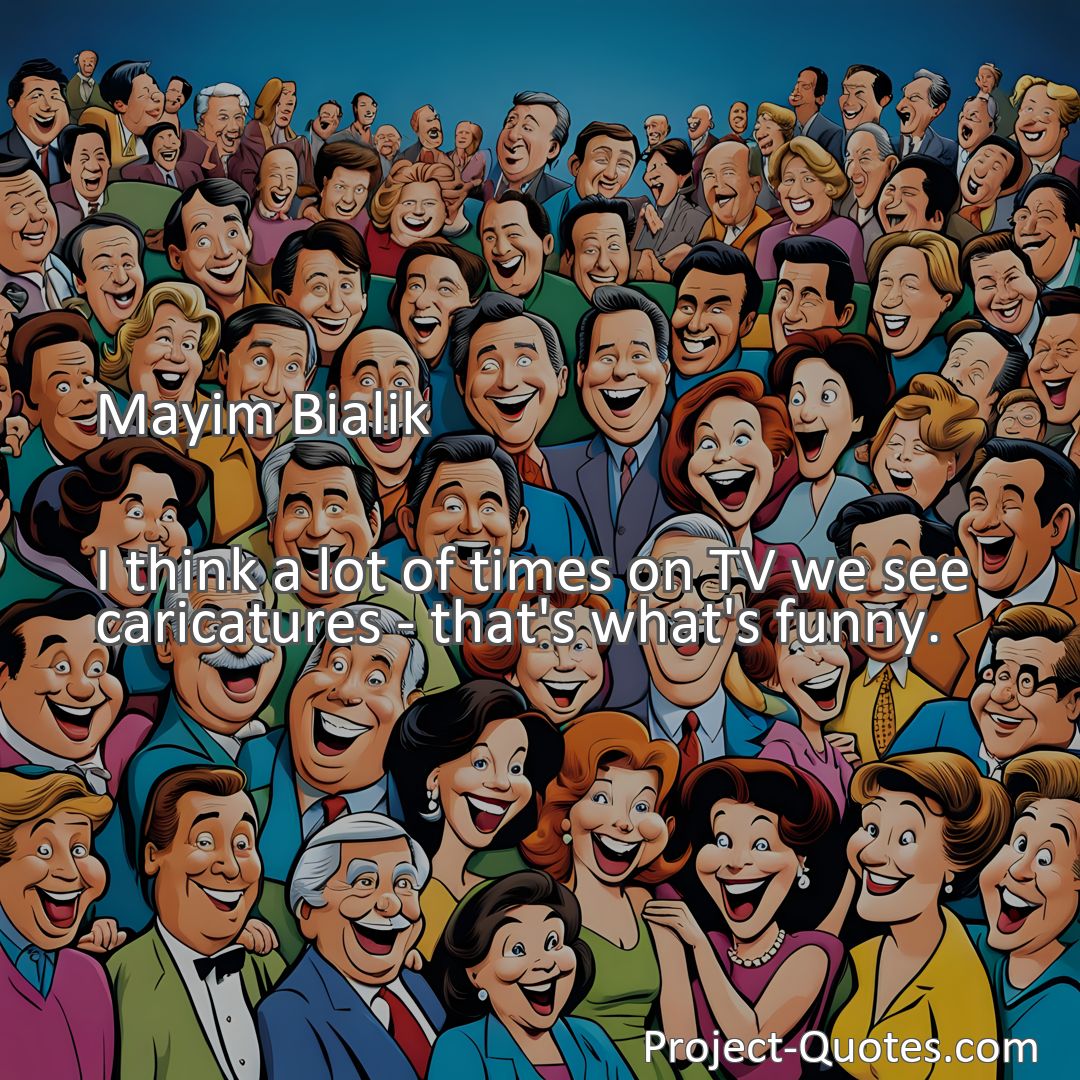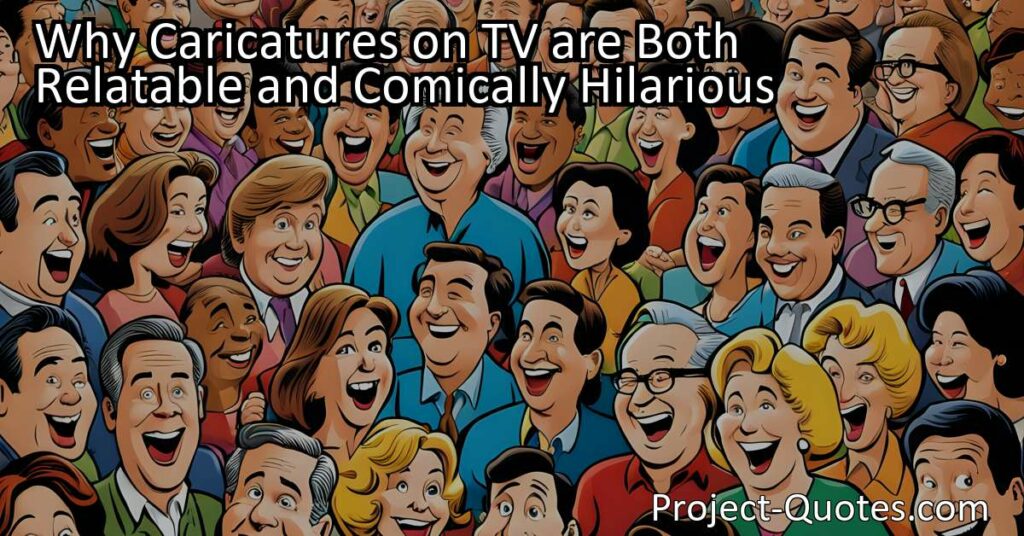I think a lot of times on TV we see caricatures – that’s what’s funny.
Mayim Bialik
Why Caricatures on TV are Both Relatable and Comically Hilarious Caricatures on television are relatable yet comically over-the-top because they exaggerate certain traits or behaviors to create humor. They provide a form of escapism and allow us to laugh at the absurdities of real life. However, it’s important to balance the use of caricatures with realistic and nuanced portrayals of characters for a deeper understanding of the human experience.
Table of Contents
Meaning of Quote – I think a lot of times on TV we see caricatures – that’s what’s funny.
Have you ever noticed that sometimes the characters we see on TV seem a little exaggerated? They make us laugh, but we know that they’re not quite like real people. Well, Mayim Bialik, an actress and neuroscientist, once said, “I think a lot of times on TV we see caricatures – that’s what’s funny.” She’s talking about how the characters we see on television are often portrayed in a larger-than-life way to entertain us.
When Bialik mentions “caricatures,” she’s referring to exaggerated or distorted representations of people or things. In the context of television, caricatures are often used as a comedic tool. They take certain traits or characteristics and magnify them to create humor. This technique can be effective because it allows viewers to easily recognize and relate to the exaggerated characteristics portrayed on screen.
So, why do we find caricatures funny? Well, one reason is that they provide a form of escapism. When we watch TV, we’re looking for entertainment and to be transported to a different world. Seeing larger-than-life characters can help us forget about our everyday problems and immerse ourselves in the comedic situations and stories presented. It’s a way to let go and have a good laugh.
Another reason why caricatures are funny is that they highlight the absurdities of real life. By exaggerating certain traits or behaviors, TV shows can shed light on the quirks and idiosyncrasies of human nature. It’s like holding up a mirror to society and saying, “Look how ridiculous we can be sometimes.” This allows us to laugh at ourselves and find humor in our own imperfections.
Think about some of the most iconic characters in television history. Take Homer Simpson from “The Simpsons,” for example. He’s not your everyday dad. He’s clumsy, childlike, and constantly getting himself into hilarious predicaments. The exaggerated characteristics make him relatable yet also comically over-the-top. We laugh at his antics because, deep down, we recognize a little bit of ourselves in him.
Caricatures can also be a way to address sensitive or controversial topics in a lighthearted way. By depicting characters as caricatures, TV shows can tackle serious issues while still keeping the tone playful. This allows viewers to engage with topics that might otherwise be too heavy or uncomfortable. It’s a delicate balance between entertainment and societal commentary.
However, it’s important to note that not all characters on TV are caricatures. In fact, some of the most compelling and impactful characters are nuanced and realistic. These characters are essential for providing a deeper understanding of the human experience and addressing complex themes. While caricatures are entertaining, they should not be the sole representation of humanity on television.
On the other hand, caricatures can sometimes perpetuate stereotypes and reinforce biases. When certain groups or individuals are consistently portrayed in an exaggerated or stereotypical manner, it can lead to misconceptions and prejudices. This is why it’s crucial for content creators to strike a balance between humor and responsible representation.
As viewers, it’s important for us to be mindful of the messages that caricatures convey. While they may make us laugh, it’s essential to remember that they’re fictional depictions designed for entertainment purposes. Real people are nuanced, complex, and multi-dimensional, and it’s crucial to recognize and respect that.
In conclusion, Mayim Bialik’s statement about caricatures on TV sheds light on the comedic nature of these exaggerated characters. Caricatures serve as a form of escapism and allow us to find humor in the absurdities of real life. They can also address sensitive topics in a lighthearted way while highlighting certain aspects of human nature. However, it’s essential to balance the use of caricatures with realistic and nuanced portrayals of characters. By being mindful of the messages conveyed by caricatures, we can appreciate their entertainment value while also respecting the complexity of real people. So next time you watch your favorite television show, take a moment to reflect on the role caricatures play and appreciate the skill and creativity behind their comedic portrayal.
I hope this quote inspired image brings you hope and peace. Share it with someone who needs it today!


